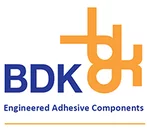Point of Care (POC) testing continues to redefine how healthcare is delivered enabling faster diagnostics, decentralised testing, and improved patient outcomes. Once limited to basic strip-based assays, POC technologies have evolved into highly integrated diagnostic systems capable of performing complex analysis at the patient’s bedside, in clinics, and even at home.
Healthcare systems are moving toward real-time, data-driven decision-making, so the demand for compact and reliable diagnostic tools continues to grow. Digital and analytical innovation is at the core of this innovation, however advances in adhesives and bonding solutions are also vital. Reliable performance in increasingly miniaturised and connected devices relies on both technology and materials.
Evolution of Point of Care Testing
Historically, POC testing was confined to simple, single-analyte tests such as glucose monitoring or lateral flow assays. However, global health challenges, like infectious disease outbreaks and the management of chronic conditions, have accelerated the demand for rapid, decentralised diagnostics.
Today’s POC platforms can provide quantitative results within minutes, often connecting directly to cloud databases and electronic medical records. This shift has driven a new generation of medical devices that combine microfluidics, biosensors, and wireless communication in compact, portable formats. This, in turn, also transforms traditional healthcare workflows as well as patient lifestyles.
Key Drivers of Innovation
1. Miniaturisation
Advances in microfluidics and lab-on-chip technologies allow complex biochemical processes to occur on surfaces no larger than a credit card. Smaller systems mean less sample volume, faster reaction times, and greater portability whilst also demanding precision in sealing and bonding to maintain assay integrity.
2. Connectivity
Integration with mobile, AI and cloud-based platforms allows clinicians to monitor patients remotely and in real-time, receive instant alerts, and analyse aggregated population data. Reliable connectivity introduces new design requirements, such as electromagnetic compatibility and low-profile, non-interfering materials.
3. Personalised Healthcare
POC testing supports tailored treatment strategies by enabling regular, accessible data collection. Devices capable of multi-analyte detection and adaptive response are key to personalised care.
4. Sustainability
The healthcare industry’s growing emphasis on sustainability is pushing manufacturers to develop recyclable components and lower-waste single-use test devices. Material and adhesive selection plays a pivotal role in achieving both functional and environmental goals.
Emerging Technologies Defining the Future
The next generation of POC devices is being shaped by innovations across multiple scientific disciplines:
- Microfluidic Platforms: Precision fluid handling within sealed microchannels ensures accurate sample distribution and reaction control.
- Advanced Biosensors: Electrochemical and optical detection systems are achieving laboratory-grade accuracy in portable formats.
- Wearable Diagnostics: Continuous monitoring devices rely on flexible substrates and skin-friendly adhesives for integrating sensors, long-term use and patient comfort.
- AI-Driven Analytics: Artificial intelligence is improving interpretation accuracy, enabling predictive healthcare insights, early intervention and automated quality assurance.
- Material Innovation: Development of flexible polymers, thin films, and medical-grade adhesives enhances device reliability under demanding physical and environmental conditions. These materials are also suitable for rapid prototyping and high-volume production.
Manufacturing & Material Considerations
Behind every reliable POC device is a foundation of material performance and process precision. The transition from traditional laboratory instruments to miniaturised, disposable devices requires the right balance of sensitivity, durability and manufacturability. It’s essential that components maintain functionality despite smaller geometries and more complex assembly requirements.
Adhesive technologies play a critical role in this transition by:
- Sealing and bonding multilayer structures for microfluidic channels such as microfluidic chips and reagent reservoirs.
- Ensuring biocompatibility and preventing contamination or leachables for sensitive assays.
- Maintaining dimensional stability and optical clarity under sterilisation, humidity or temperature extremes.
- Supporting flexible and wearable formats where comfort and conformability are key, without compromising performance.
Manufacturers rely on adhesive partners with expertise in material formulation and precision converting to ensure consistency, performance, and compliance. This is where BDK’s engineering-driven approach to adhesive technology becomes invaluable.
Regulatory & Quality Challenges
The POC testing market operates under tight regulatory control. Compliance with standards such as FDA 510(k), EU IVDR, and ISO 13485 requires detailed material validation and traceability. Adhesives and films used in contact with biological samples must also meet ISO 10993 biocompatibility requirements and demonstrate stability under sterilisation.
Beyond material properties, data security and cybersecurity compliance are becoming critical. Connected POC devices must not only generate accurate results but also ensure data integrity across transmission networks, further influencing device architecture and materials selection.
Barriers & Limitations to Overcome
Despite the innovation of POC diagnostics, technical and operational challenges persist:
- Sensor drift and calibration issues can affect long-term accuracy, as well as sample contamination.
- Thermal and mechanical stresses during use can impact adhesive or film performance of multilayer adhesive systems and microchannels.
- Scalability remains a barrier as designs transition from prototype to high-volume disposable testing production.
- Procurement complexity arises when sourcing materials with consistent global quality and regulatory documentation.
Addressing these barriers requires collaboration across the supply chain, from R&D and design to materials science and procurement.
Future Outlook for POC Testing
The future of Point of Care testing lies in integration; merging analytical precision, user comfort, and digital connectivity. Devices will become smaller, smarter, and more sustainable, with rapid data feedback loops enabling predictive and preventive healthcare.
Adhesive and bonding technologies will remain central to this development. As devices continue to miniaturise, the need for high-performance, biocompatible, and durable adhesives will only grow. Collaborations between device manufacturers and materials specialists, like BDK, will be key to ensuring devices are not only innovative but also reliable, manufacturable, and compliant.
Adhesives may not be the most visible component of a POC device, but they are among the most critical. They enable the integrity, comfort, and functionality that define performance. With our expertise in medical-grade adhesive solutions, BDK is well positioned to support the next generation of Point of Care testing technologies, helping transform diagnostics altogether.
Contact us today to discuss your requirements.
